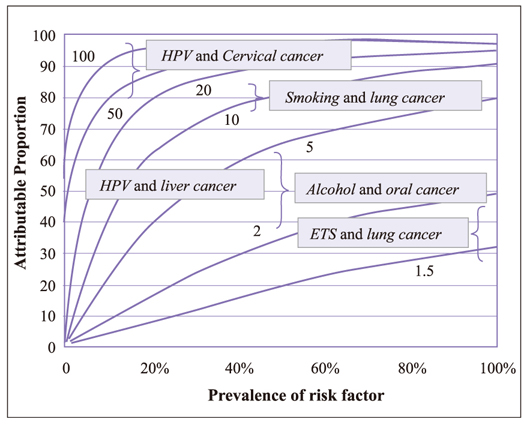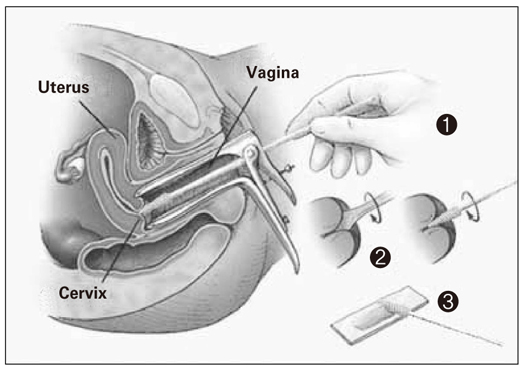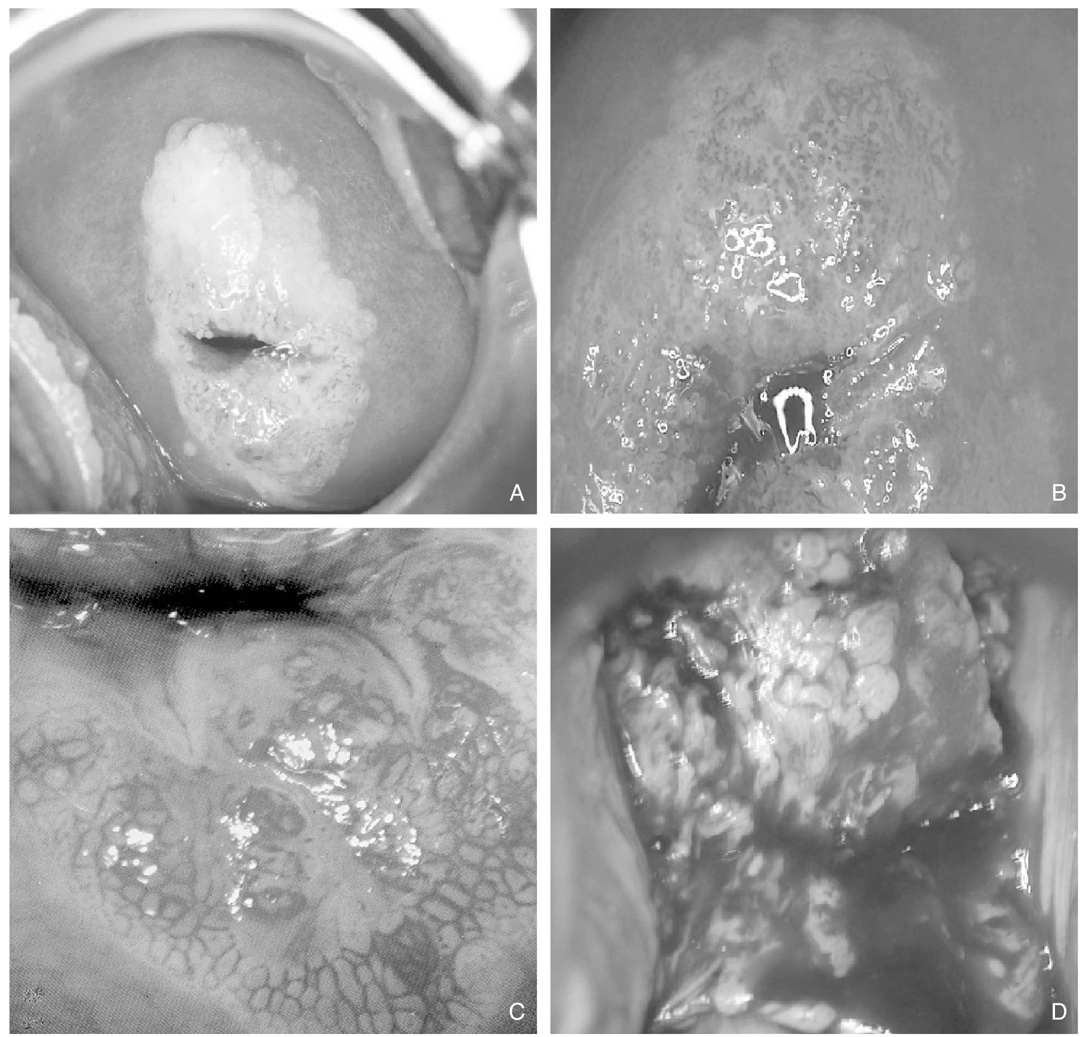J Korean Med Assoc.
2007 Sep;50(9):769-777. 10.5124/jkma.2007.50.9.769.
Causes and Diagnoses of Cervical Cancer
- Affiliations
-
- 1Department of Obstetrics and Gynecology, Yonsei University College of Medicine, Korea. ytkchoi@yumc.yonsei.ac.kr
- KMID: 2184909
- DOI: http://doi.org/10.5124/jkma.2007.50.9.769
Abstract
- Cervical cancer is the second most common malignant neoplasm affecting women worldwide, with a high rate of mortality throughout the world. Epidemiologic, biologic, and genetic data have identified a consistent association of human papillomavirus (HPV) infection with the development of cervical cancer. Minor causes of cervical cancer include oral contraceptives, obstetrical history, sexually transmitted disease, smoking, nutrition, immunosuppression state, and unexplained factors. For the screening and diagnosis of cervical carcinoma, Papanicolaou cytologic test (Pap test), liquid-based cytologic test, colposcopy, cervicography, and HPV DNA test are clinically useful diagnostic procedures. Liquid-based cytologic test, HPV DNA test, and cervicography can be used additionally to decrease the false negative rate of conventional Pap test.
MeSH Terms
Figure
Reference
-
1. Pisani P, Bray F, Parkin DM. Estimation of the worldwide prevalence of cancer for 25 sites in the adult population. Int J Cancer. 2002. 97:72–81.
Article2. Korean cancer registry. Annual report of Korean cancer registry (2002. 1.~2002. 12.). 2003.3. zur Hausen H. Human papillomaviruses and their possible role in squamous cell carcinomas. Curr Top Microbiol Immunol. 1977. 78:1–30.
Article4. Koutsky LA, Holmes KK, Critchlow CW, Stevens CE, Paavonen J, Beckmann AM, Derouen TA, Galloway DA, Vernon D, Kiviat NB. A cohort study of the risk of cervical intraepithelial neoplasia grade 2 or 3 in relation to papillomavirus infection. N Engl J Med. 1992. 327:1272–1278.
Article5. Campion MJ, McCane DJ, Cuzick J. Progressive potential of mild cervical atypia: prospective cytological, colposcopic and virological study. Lancet. 1986. 2:237–240.
Article6. Rozendaal L, Walboomers JM, van der Linden JC, Voorhorst FJ, Kenemans P, Helmerhorst TJ, van Ballegooijen M, Meijer CJ. PCR-based high risk HPV test in cervical cancer screening gives objective risk assessment of women with cytomorphologically normal cervical smears. Int J Cancer. 1996. 68:766–769.
Article7. Franco EL, Harper DM. Vaccination against human papillomavirus infection: a new paradigm in cervical cancer control. Vaccine. 2005. 23:2388–2394.
Article8. Schiffman M, Castle PE. Human papillomavirus: epidemiology and public health. Arch Pathol Lab Med. 2003. 127:930–934.
Article9. Munoz N, Bosch FX, de Sanjose S, Herrero R, Castellsague X, Shah KV, Snijders PJ, Meijer CJ. International Agency for Research on Cancer Multicenter Cervical Cancer Study Group. Epidemiologic classification of human papillomavirus types associated with cervical cancer. N Engl J Med. 2003. 348:518–527.
Article10. Zur Hausen. Papillomavirus in anogenital cancer as a model to understanding the role of viruses in human cancers. Cancer Res. 1989. 49:4677–4681.11. Lorincz AT, Temple GF, Kurman RJ, Jenson AB, Lancaster WD. Oncogenic association of specific papillomavirus types with cervical neoplasia. J Natl Cancer Inst. 1987. 79:671–677.12. Stanley MA. Human papillomavirus and cervical carcinogenesis. Best Practice and Research in Clinical Obstetrics and Gynecology. 2001. 15:663–676.
Article13. Gravitt PE, Shah KV. Rohan TE, Shah KV, editors. The biology of human papillomavirus infections. Cervical cancer: from etiology to prevention. 2004. Boston, MA: Kluwer Academic Publishers;81–99.
Article14. Chow LT, Broker TR. Nathanson N, Ahmed R, Gonzelez-Scarano F, editors. Small DNA tumor viruses. Viral pathogenesis. 1997. Philadelphia: Lippincott-Raven;267–301.15. Doorbar J, Elston RC, Napthine S, Raj K, Medcalf E, Jackson D, Coleman N, Griffin HM, Masterson P, Stacey S, Mengistu Y, Dunlop J. The E1E4 protein of human papillomavirus type 16 associates with a putative RNA helicase through sequences in its C terminus. J Virol. 2000. 74:10081–10095.
Article16. Roberts S, Ashmole I, Gibson LJ, Rookes SM, Barton GJ, Gallimore PH. Mutational analysis of human papillomavirus E4 proteins: identification of structural features important in the formation of cytoplasmic E4/cytokeratin networks in epithelial cells. J Virol. 1994. 68:6432–6445.
Article17. Roden RB, Kirnbauer R, Jenson AB, Lowy DR, Schiller JT. Interaction of papillomaviruses with the cell surface. J Virol. 1994. 68:7260–7266.
Article18. Kessis TD, Slebos RJ, Nelson WG, Kastan MB, Plunkett BS, Han SM, Lorincz AT, Hedrick L, Cho KR. Human papillomavirus 16 E6 expression disrupts the p53-mediated cellular response to DNA damage. Proc Natl Acad Sci USA. 1993. 90:3988–3992.
Article19. Chellappan S, Kraus VB, Kroger B, Munger K, Howley PM, Phelps WC, Nevins JR. Adenovirus E1A, simian virus 40 tumor antigen, and human papillomavirus E7 protein share the capacity to disrupt the interaction between transcription factor E2F and the retinoblastoma gene product. Proc Natl Acad Sci USA. 1992. 89:4549–4553.
Article20. Munger K, Howley PM. Human papillomavirus immortalization and transformation functions. Virus Res. 2002. 89:213–228.
Article21. Oh ST, Laimins LA. Rohan TE, Shah KV, editors. The molecular pathogenesis of human papillomavirus-associated cancer. Cervical cancer: from etiology to prevention. 2004. Boston, MA: Kluwer Academic Publishers;101–108.
Article22. Laimins LA. Human papillomaviruses target differentiating epithelia for virion production and malignant conversion. Semin Virol. 1996. 7:305–313.
Article23. Depuydt CE, Vereecken AJ, Salembier GM, Vanbrabant AS, Boels LA, van Herck E, Arbyn M, Segers K, Bogers JJ. Thin-layer liquid-based cervical cytology and PCR for detecting and typing human papillomavirus DNA in Flemish women. Br J Cancer. 2003. 88:560–566.
Article24. Solomon D, Davey D, Kurman R, Moriarty A, O'Connor D, Prey M, Raab S, Sherman M, Wilbur D, Wright T Jr, Young N. Forum Group Members. Bethesda 2001 Workshop. The 2001 Bethesda System. Terminology for reporting results of cervical cytology. JAMA. 2002. 287:2114–2119.
Article25. Nanda K, McCrory DC, Myers ER, Bastian LA, Hasselblad V, Hickey JD, Matchar DB. Accuracy of the Papanicolaou test in screening for and follow-up of cervical cytologic abnormalities: a systematic review. Ann Intern Med. 2000. 132:810–819.
Article26. Richart RM, Vaillant HW. Influence of cell collection techniques upon cytological diagnosis. Cancer. 1965. 18:1474–1478.
Article27. Coppleson LW, Brown B. Estimation of the screening error rate from the observed detection rates in repeated cervical cytology. Am J Obstet Gynecol. 1974. 119:953–958.
Article28. Gay JD, Donaldson LD, Goellner JR. False-negative results in cervical cytologic studies. Acta Cytol. 1985. 29:1043–1046.29. Koss LG. The Papanicolaou test for cervical cancer detection: a triumph and a tragedy. JAMA. 1989. 261:737–743.
Article30. Zahniser DJ, Sullivan PJ. CYTYC Corporation. Acta Cytol. 1996. 40:37–44.
Article31. Franco EL, Duarte-Franco E, Ferenczy A. Cervical cancer: epidemiology, prevention, and role of human papillomavirus infection. Can Med Assoc J. 2001. 164:1017–1025.32. Soler ME, Blumenthal PD. New technologies in cervical cancer precursor detection. Curr Opin Oncol. 2000. 12:460–465.
Article33. Lee KR, Ashfaq R, Bridsong GG, Corkill ME, McINtosh KM, Inhorn SL. Comparison of conventional Papanicolaou smears and a fluid-based, thin-layer system for cervical cancer screening. Obstet Gynecol. 1997. 90:278–284.
Article34. Linder J, Zahniser D. ThinPrep Papanicolaou testing to reduce false-negative cervical cytology. Arch Pathol Lab Med. 1998. 122:139–144.35. Szarewski A, Cuzick J, Edwards R, Butler B, Singer A. The use of cervicography in a primary screening service. Br J Obstet Gynecol. 1991. 98:313–317.
Article36. August N. Cervicography for evaluation the "atypical" Papanicolaou smear. J Reprod Med. 1991. 36:89–94.37. Wright TC Jr, Schiffman M. Adding a test for human papillomavirus DNA to cervical-cancer screening. N Engl J Med. 2003. 348:489–490.
Article38. Nobbenhuis MA, Walboomers JM, Helmerhorst TJ, Rozendaal L, Remmink AJ, Risse EK, van der Linden HC, Voorhorst FJ, Kenemans P, Meijer CJ. Relation of human papillomavirus status to cervical lesions and consequences for cervical-cancer screening: a prospective study. Lancet. 1999. 354:20–25.
Article39. Reid R. Biology and colposcopic features of human papillomavirus-associated cervical disease. Obstet Gynecol Clin North Am. 1993. 20:123–151.
Article40. Liu JS, Kuo SR, Broker TR, Chow LT. The functions of human papillomavirus type 11 E1, E2, and E2C proteins in cell-free DNA replication. J Biol Chem. 1995. 270:27283–27291.
Article
- Full Text Links
- Actions
-
Cited
- CITED
-
- Close
- Share
- Similar articles
-
- Spiral Brush in PapSure Test for Cervical Cancer Screening
- The impact of COVID-19 on screening for colorectal, gastric, breast, and cervical cancer in Korea
- PapSure Test for Cervical Cancer Screening - Papanicolaou Smear Cytology and Speculoscopy -
- Conventional Papanicolaou Cervical Cytologic Screening in Women for Health Check-up
- “JAK2 V617F Mutation in Cervical Cancer Related to HPV & STIsâ€: Letter




